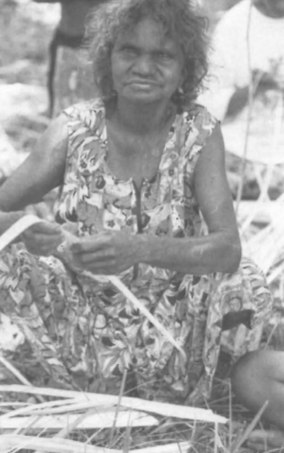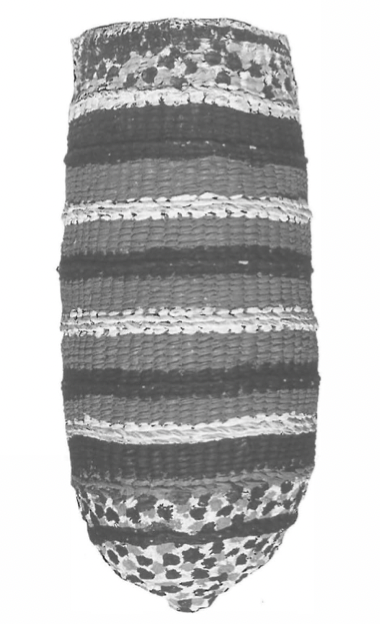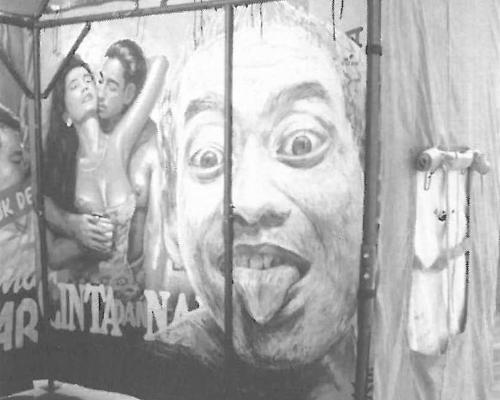
November 1999 was a sad time in the small inland Aboriginal community of Gapuwiyak in northeast Arnhem Land. Many people gathered to help send a senior Madarrpa woman's body and soul back to her home by performing the appropriate clan songs and dances. Her homeland is Baykurrji, a Yirritja outstation from Gapuwiyak. Although there was much IIcrying" and "worrying", there was also laughter and people remembering the good times they spent with her.
Dorothy Njmanydjurra Madarrpa was a woman of generous spirit and heart.
Her passion for life, caring for others, and sense of humour were always present even when she was quite ill. Being small in stature was not an indication of the large amount of ceremonial and practical knowledge she held in both religious life and in her life as a maker of objects made from fibre. Her passing is a loss not only to her friends and family in Arnhem Land but also to those who never had the opportunity to know her or see her work. I was privileged to work and learn from her aspects of the many facets of fibre production and use, particularly the making of bathi (fibre container forms). Despite language differences, she was willing to help a balanda (European) woman learn about Yolu (Aboriginal people from northeast Arnhem Land) ways of doing things.
She laughed at some of my efforts but would always show me another, perhaps more appropriate, way of doing things. Sitting for hours on her verandah learning to split pandanus the proper way, was made into a less serious activity when one of her husband's beloved pet pigs would steal pieces of pandanus and run off grunting while eating them.

Pandanus and kurrajong collected from the surrounding country are the main materials that women from Gapuwiyak use to produce their baskets, string bags, mats and hats. The prepared fibre is sometimes left plain but more often dyed vibrant colours produced from roots and bark of trees. Most of the baskets that Njmanydjurru produced to sell were pandanus coiled round ones with string handles instead of the more typical ones with coiled rigid handles. My interest in older twined baskets prompted the making of a series of dhimbuka which are tightly twined narrow conical ones with characteristic rows of three stranded twining. Some of these she made primarily from plain pandanus and others were patterned with bands constructed with dyed pandanus. The last basket that I received was a collaboration between Njmanydjurru and her husband, Bill Manydjarri Wanambi, who is also deceased. Manydjarri tapped the basket as he sang its story, the same as other old people sang before him. The basket is a Dhuwa moiety one used for ceremonies, each painted section telling a story.
Njmanydjurru was also one of the makers of ceremonial bathi in the community. She was working on one as a memorial to her husband when she died. The painted basket that remains will remind us of her skill as an artist and her importance to her six children and the community in Arnhem Land.












